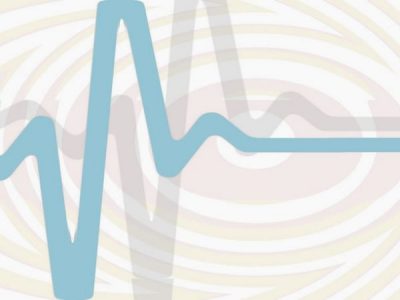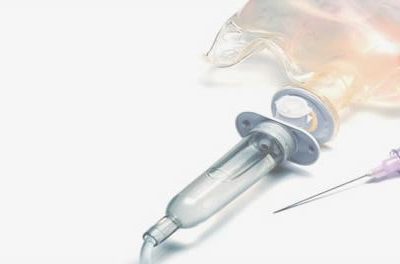Welcome to the drug interactions section for physicians and pharmacists. This section features links to clinical practice resources on identifying, checking and managing drug-drug including CYP450 (cytochrome P450), drug-herb and drug-food interactions.
Drug Interactions by Hansten and Horn: Current Topics in Drug Interactions
- Source: hanstenandhorn.com
- Clinical Resource: Journal Articles
- Register to Access Content: No
Drug interactions in general practice
An interaction occurs when the effects of one drug are changed by another drug, food, drink or exposure to an environmental chemical. However, not all drug interactions are clinically significant. This Bulletin discusses drug interactions and explores how they can be managed in general practice.
- Source: webarchive.org.uk
- Clinical Resource: National Prescribing Centre Bulletin
- Register to Access Content: No
Drug Interactions (1): General Principles
This is the first of 2 bulletins on drug interactions which outlines the principles of drug interaction and suggests ways to minimise the risk associated with them.
Drug Interactions (2): Frequently Asked Questions
This is the second of 2 bulletins on drug interactions which reviews some frequently asked questions on drug interactions received by the NMIC.
- Source: stjames.ie
- Clinical Resource: Medicines Information Centre Bulletins
- Register to Access Content: No
Clinically Important, Common Drug-Drug Interactions
The table below describes potential management strategies for 16 DDIs. It is intended to serve as an educational tool and is not intended to be a guide for medical practice. The table lists the effect (e.g., pharmacokinetic, pharmacokinetic, clinical) and mechanism of the potential DDIs in addition to the propensity for related drugs to interact and options for clinical management.
- Source: crediblemeds.org
- Clinical Resource: Table
- Register to Access Content: No
ADRAC has previously warned prescribers about the ‘triple whammy’ – the combination of an ACE inhibitor (ACEI) or an angiotensin II receptor antagonist (A2RA), a diuretic and an NSAID (including a COX-2 selective NSAID), which may predispose vulnerable patients to renal failure.
- Source: tga.gov.au
- Clinical Resource: Bulletin
- Register to Access Content: No
Drug combinations and impaired renal function – the ‘triple whammy’
Recent studies have identified the ‘triple whammy’ in which combinations of diuretics, nonsteroidal anti-inflammatory drugs (NSAIDs), ACE inhibitors (ACEI) and/or angiotensin receptor antagonists (ARA) may impair renal function.
- Source: eu.wiley.com
- Clinical Resource: Journal Article
- Register to Access Content: No
The Triple Whammy – A Dangerous Trio
Triple Whammy – ‘three simultaneous deleterious blows with compounded effect’. This combination of medicines can result in significant patient harm; the rate of fatalities from renal failure is estimated at 10%.
- Source: saferx.co.nz
- Clinical Resource: Bulletin
- Register to Access Content: No
Cytochrome P450 Part 1: Multiplicity and Function
This review is an update of the CYP450 superfamily of drug metabolising enzymes. It comprises a brief history of CYP450 research, outlines the standard P450 nomenclature system, and describes CYP450 multiplicity, structure and function.
Cytochrome P450 Part 2: Genetics of Inter-Individual Variability
This second article in the CYP series describes current understanding of genetic variability in the major drug metabolising CYP enzymes, nomenclature used to describe variant CYP genes, and the clinical significance of such variability.
Cytochrome P450 Part 3: Impact of Drug–Drug Interactions
This final article in the series describes the issues and principles that are important in identifying and assessing drug interactions that involve CYP enzymes.
- Source: shpa.org.au
- Clinical Resource: Journal Articles
- Register to Access Content: No
Indiana University School of Medicine
Cytochrome P450 Drug Interaction Table
This table is designed as a hypothesis testing, teaching and reference tool for physicians and researchers interested in drug interactions that are the result of competition for, or effects on the human cytochrome P450 system.
The table contains lists of drugs in columns under the designation of specific cytochrome P450 isoforms. A drug appears in a column if there is published evidence that it is metabolized, at least in part, via that isoform. It does not necessarily follow that the isoform is the principal metabolic pathway in vivo, or that alterations in the rate of the metabolic reaction catalyzed by that isoform will have large effects on the pharmacokinetics of the drug.
- Source: iu.edu
- Clinical Resource: Table
- Register to Access Content: No
Pharmacokinetics and Metabolic Drug Interactions
Pharmacokinetics and drug metabolism play an important role as determinants of in vivo drug action. The CYP450 enzyme family plays a determinant role in the biotransformation of a vast number of structurally diverse drugs. Many drug interactions are a result of the inhibition or induction of CYP enzymes. The non-compartmental pharmacokinetic analysis is the most used method for analyzing data from a drug interaction study. Compartmental analysis can be also useful and sometimes more informative than non-compartmental analysis. Many efforts to reduce polypharmacy are important, and pharmacokinetic tools used to study the mechanism of drug-drug interactions may help in a better management of pharmacotherapy including the avoidance of clinically relevant drug interactions.
- Source: benthamscience.com
- Clinical Resource: Journal Article
- Register to Access Content: No
Drug Interactions Checker – For Drugs, Food & Alcohol
Drugs.com
The Drug Interaction Checker explains the mechanism of each drug interaction, the level of significance of the interaction (major, moderate or minor), and in certain cases, can provide the recommended course of action to manage the interaction. The Drug Interaction Checker will also display any interactions between your chosen drug(s) and food.
- Source: drugs.com
- Clinical Resource: Database
- Register to Access Content: No
The objectives of this lesson are such that upon completion the participant will be able to:
- List the mechanism of drug/food interactions.
- Describe the role of cytochrome P450 in drug metabolism.
- Identify the drugs that can interact with grapefruit.
- Acknowledge the ingredients in grapefruit that may trigger interactions.
- Relate common herd/drug interactions.
- Source: wfprofessional.com
- Clinical Resource: CE / CPD / Learning
- Register to Access Content: No
Food–Drug Interactions
Which Ones Really Matter?
The purpose of this article is to equip pharmacists with a better understanding of drug-food interactions. This article differs from traditional reviews on this topic because the food substance is categorized individually, with the interacting drugs discussed under each heading. While there are hundreds of drug-nutrient interactions reported in the literature, the aim here is to focus on those that are more common and clinically significant.
- Source: uspharmacist.com
- Clinical Resource: Journal Article
- Register to Access Content: No
Tuberculosis Medication Drug and Food Interactions
- Source: heartlandntbc.org
- Clinical Resource: Pocket Guide
- Register to Access Content: No
“Is it safe to have a drink while taking medication?”
The following table provides information on the potential for interaction between alcohol and common medications.
- Source: usask.ca
- Clinical Resource: Drug Information Services Newsletter
- Register to Access Content: No
Alcohol-related Drug Interactions
There are a number of classes of drugs that can potentially interact with alcohol (e.g., antibiotics, antidepressants, sedative/hypnotics, opioids, anticoagulants, etc). The included chart summarizes common alcohol-medication interactions including precautions and recommendations for alcohol consumption.
- Source: hamsnetwork.org
- Clinical Resource: Detail Document
- Register to Access Content: No
This guidance applies to general psychiatry units, but may not be suitable for application on specialist units caring for patients who are known alcohol abusers or are alcohol dependent.
- Source: sussexpartnership.nhs.uk
- Clinical Resource: Guidance
- Register to Access Content: No
Sex, drugs and alcohol
Drug interactions of concern to consumers
Patients often express concerns about interactions between their medicines and alcohol and any illicit drugs that they may consume. Doctors and pharmacists are also often asked about interactions, especially short courses of antibiotics, which might reduce the efficacy of oral contraceptives.
- Source: nps.org.au
- Clinical Resource: Journal Article
- Register to Access Content: No
An overview of interactions between grapefruit juice and drugs
The purpose of this article is to examine the cause of this food-drug interaction, discern the list of affected medications and to equip the pharmacist with this knowledge and specify their role in counselling patients on options to avoid the possibility of a grapefruit-drug interaction.
- Source: sapj.co.za
- Clinical Resource: Journal Article
- Register to Access Content: No
Drug – Grapefruit Interactions (Review)
Grapefruit juice is a potent inhibitor of the intestinal cytochrome P-450 3A4 system (specifically: CYP3A4 – mediated drug metabolism) which is responsible for the first-pass metabolism of many medications. This interaction can lead to increases in bioavailability and corresponding increases in serum drug levels. In many cases, the increased serum drug levels can produce some readily observable symptoms.
- Source: globalrph.com
- Clinical Resource: Review
- Register to Access Content: No
Drug Interactions with Vitamins and Minerals
In this article, common drug interactions with vitamins and minerals are discussed, along with suggestions on how the pharmacist should manage these interactions.
- Source: uspharmacist.com
- Clinical Resource: Journal Article
- Register to Access Content: No
The hidden problem of herb-drug interactions
Potentially harmful interactions between herbs and prescription medicines are common, yet healthcare professionals often do not ask about herbal remedies when prescribing and patients do not volunteer that they are taking them. This article discusses the types of herb-drug interaction that can occur and how they can be recognised and avoided.
- Source: euwiley.com
- Clinical Resource: Journal Article
- Register to Access Content: No
Drug interactions with complementary medicines
Health professionals are expected to be familiar with common and clinically significant complementary medicine interactions or at least know where to look them up. Knowing the dynamic and kinetic interactions associated with commonly used complementary medicines helps to identify the risk of drug interactions. Although information on complementary medicine interactions is not readily provided by the manufacturers, evidence is available by way of case reports, independent research and web based resources, which have increased in recent years. Collectively, these data make interactions with complementary medicines largely predictable and therefore preventable.
- Source: nps.org.au
- Clinical Resource: Journal Article
- Register to Access Content: No
Herbal and Dietary Supplement–Drug Interactions in Patients with Chronic Illnesses
This review focuses on the use of dietary supplements in patients with chronic conditions, in whom the risk for dietary supplement–drug interaction is the greatest.
- Source: aafp.org
- Clinical Resource: Journal Article
- Register to Access Content: No
St John’s wort (Hypericum perforatum): drug interactions and clinical outcomes
The aim of this work is to identify the medicines which interact with the herbal remedy St John’s wort (SJW), and the mechanisms responsible
- Source: eu.wiley.com
- Clinical Resource: Journal Article
- Register to Access Content: No
Canadian Quick Reference Guide to Psychiatric Medication
Please note, P450 & Special Considerations sections are designed to contain helpful clinical information, and are not designed to be comprehensive. Medication interactions mediated by P450 enzyme sub-systems can be derived from the P450 information sections of the guide. Selected other clinically significant medication interactions are referred to in the Special Considerations columns.
- Source: mdpu.ca
- Clinical Resource: Reference Guide
- Register to Access Content: No
Tramadol: Seizures, Serotonin Syndrome, and Coadministered Antidepressants
In this edition of The Interface, we discuss two potential adverse events related to this commonly prescribed analgesic—seizures and serotonin syndrome
- Source: nih.gov
- Clinical Resource: Journal Article
- Register to Access Content: No
Citalopram Drug Interaction: Prolonged QT and Risk of Arrhythmia
The interaction between citalopram and omeprazole or esomeprazole has the potential to significantly increase citalopram serum levels, prolong the QT interval and increase risk of TdP. Avoid this combination if possible.
- Source: usask.ca
- Clinical Resource: Drug Information Services Newsletter
- Register to Access Content: No
Drug interactions with oral hypoglycaemic drugs
Oral hypoglycaemic drugs may interact with other drugs. Pharmacodynamic interactions occur with medications that alter blood glucose and may require the dose of the oral hypoglycaemic drug to be altered. Pharmacokinetic interactions vary with the drug group. Sulfonylureas and repaglinide are metabolised in the liver. Their plasma concentrations and activity can be reduced by drugs which induce hepatic enzymes and increased by hepatic enzyme inhibitors. Metformin is renally excreted and may have increased toxicity with drugs that impair renal function.
- Source: nps.org.au
- Clinical Resource: Journal Article
- Register to Access Content: No
Rifamycins and Anti-Diabetic Agents: Drug-Drug Interactions
A 2-sided diagram for clinicians and healthcare providers that describes drug-drug interactions of Rifamycins and Anti-Diabetic Agents.
- Source: heartlandntbc.org
- Clinical Resource: Diagram
- Register to Access Content: No
HIV Insite
Database of Antiretroviral Drug Interactions
This database contains drug interactions (involving at least one antiretroviral drug) that the editors have found reported in published articles, abstracts from major conferences, or information presented to the U.S. Food and Drug Administration (generally reflected in product labeling). Studies demonstrating the absence of an interaction are also included. In addition to interactions demonstrated by data, interactions inferred from predicted mechanisms of drug metabolism are included when judged to be of potential clinical significance.
- Source: hivinsite.ucsf.edu
- Clinical Resource: Database
- Register to Access Content: No
HIV Drug Interactions
University of Liverpool
We provide a clinically useful, reliable, comprehensive, up-to-date, evidence-based drug-drug interaction resource, freely available to healthcare workers, patients and researchers.
- Source: hiv-druginteractions.org
- Clinical Resource: Various
- Register to Access Content: No
- Source: nccc.ucsf.edu
- Clinical Resource: Table
- Register to Access Content: No
Antiretroviral Interactions
Drug Name/Class:
- Acid suppressing Agents
- Analgesics: opioids, opioid substitution, non-narcotics
- Anticonvulsants
- Anti-infectives: azoles and macrolides
- Anti-infectives: TB drugs
- Hepatitis C drugs
- Cardiovascular drugs: antihypertensives, digoxin
- Cardiovascular drugs: antiplatelets, anticoagulants
- Cardiovascular drugs: lipid-lowering agents
- Diabetes medications
- Genitourinary drugs: erectile dysfunction, pulmonary arterial hypertension
- Psychotropics
- Recreational drugs
- Vitamins, herbals, body-building supplements
- Source: hivclinic.ca
- Clinical Resource: Tables
- Register to Access Content: No
HEP Drug Interactions
University of Liverpool
This web site was established in 2010 by members of the Department of Pharmacology at the University of Liverpool to offer a resource for healthcare providers, researchers and patients to be able to understand and manage drug-drug interactions.
- Source: hep-druginteractions.org
- Clinical Resource: Various
- Register to Access Content: No
Warfarin, antiplatelet drugs and their interactions
Patients who are being treated with warfarin may sometimes be prescribed or buy antiplatelet drugs, such as aspirin. As warfarin and antiplatelet drugs increase the risk of bleeding, their combination can put patients at risk of a major haemorrhage. This risk may be further increased by the patient’s age and other illnesses.
- Source: nps.org.au
- Clinical Resource: Journal Article
- Register to Access Content: No
Clopidogrel and Possible Interaction with Proton Pump Inhibitors
The interaction between clopidogrel and PPIs has been examined recently in systematic reviews and metaanalyses. In general, the studies included in these reviews, investigate the effects of PPIs as a class on the incidence on major adverse cardiac events in patients who are treated with clopidogrel and include patients taking any PPI.
- Source: ggcprescribing.org.uk
- Clinical Resource: Bulletin
- Register to Access Content: No
Drug interactions with statins
This bulletin summarises important interactions with the three currently funded statins in New Zealand: simvastatin, atorvastatin and pravastatin
- Source: medicinesinformation.co.nz
- Clinical Resource: Drug Information Service Bulletin
- Register to Access Content: No
Clinically relevant drug interactions with antiepileptic drugs
Comprehensive reviews of interactions involving AEDs have been published recently. The purpose of the present review is to highlight those which, because of their frequency or magnitude, are especially likely to have adverse clinical consequences.
- Source: eu.wiley.com
- Clinical Resource: Journal Article
- Register to Access Content: No
This FSRH Guidance updates the January 2017 version and provides clinical recommendations and good practice points for health professionals on Drug Interactions with Hormonal Contraception.
- Source: fsrh.org
- Clinical Resource: Guidance
- Register to Access Content: No
Drug Interactions in Palliative Care
Advanced cancer patients are at risk of potential drug interactions because they are often on many medications. Drug-drug interactions can be kinetic, dynamic and pharmaceutical. Pharmacokinetic interactions mainly involved Cytochrome P450 enzymes system.
- Source: fmshk.org
- Clinical Resource: Newsletter
- Register to Access Content: No
Drug Interactions in Dermatology
This article aims to assist pharmacists in identifying patients at risk for clinically significant dermatologic drug interactions, review the general mechanisms of drug interactions, and help lower patients’ risk with a discussion of select dermatologic drugs that may lead to adverse effects. With this knowledge, as well as proper screening, prescribing, and monitoring, clinicians can help prevent fatal consequences.
- Source: uspharmacist.com
- Clinical Resource: Journal Article
- Register to Access Content: No
Drug Interactions with Tobacco Smoke
Many interactions between tobacco smoke and medications have been identified. Note that in most cases it is the tobacco smoke—not the nicotine—that causes these drug interactions. Tobacco smoke interacts with medications through pharmacokinetic (PK) and pharmacodynamic (PD) mechanisms. PK interactions affect the absorption, distribution, metabolism, or elimination of other drugs, potentially causing an altered pharmacologic response.
- Source: smokingcessationleadership.ucsf.edu
- Clinical Resource: Table
- Register to Access Content: No
Resources last checked: 09/09/2021



